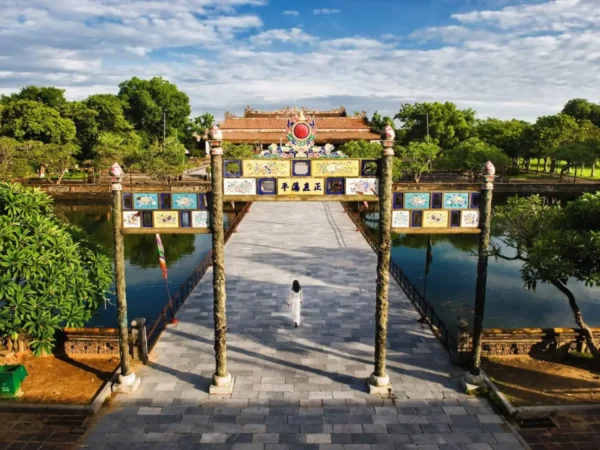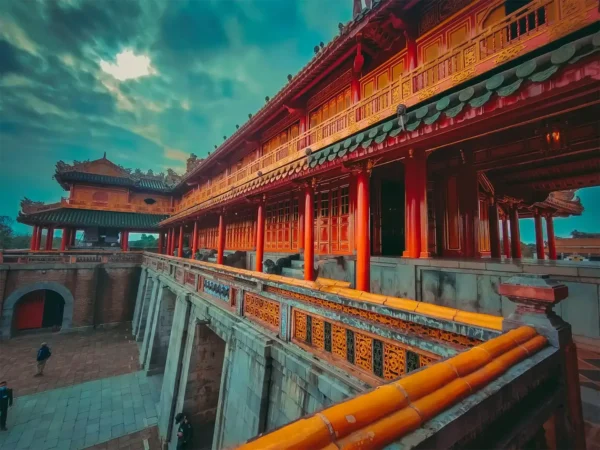Hue Imperial City: Experience the Powerful Historic Charm
Hue Imperial City is a place you must visit! It has big old gates, calm lakes, and green gardens. Long ago, kings and queens lived here. Every step you take shows you something beautiful and full of history. The colors, the views, and the quiet air make it so special. It’s also a great spot to take nice photos and relax. Want to see more? Scroll down and let this amazing place surprise you!
The History Of The Imperial City Of Hue
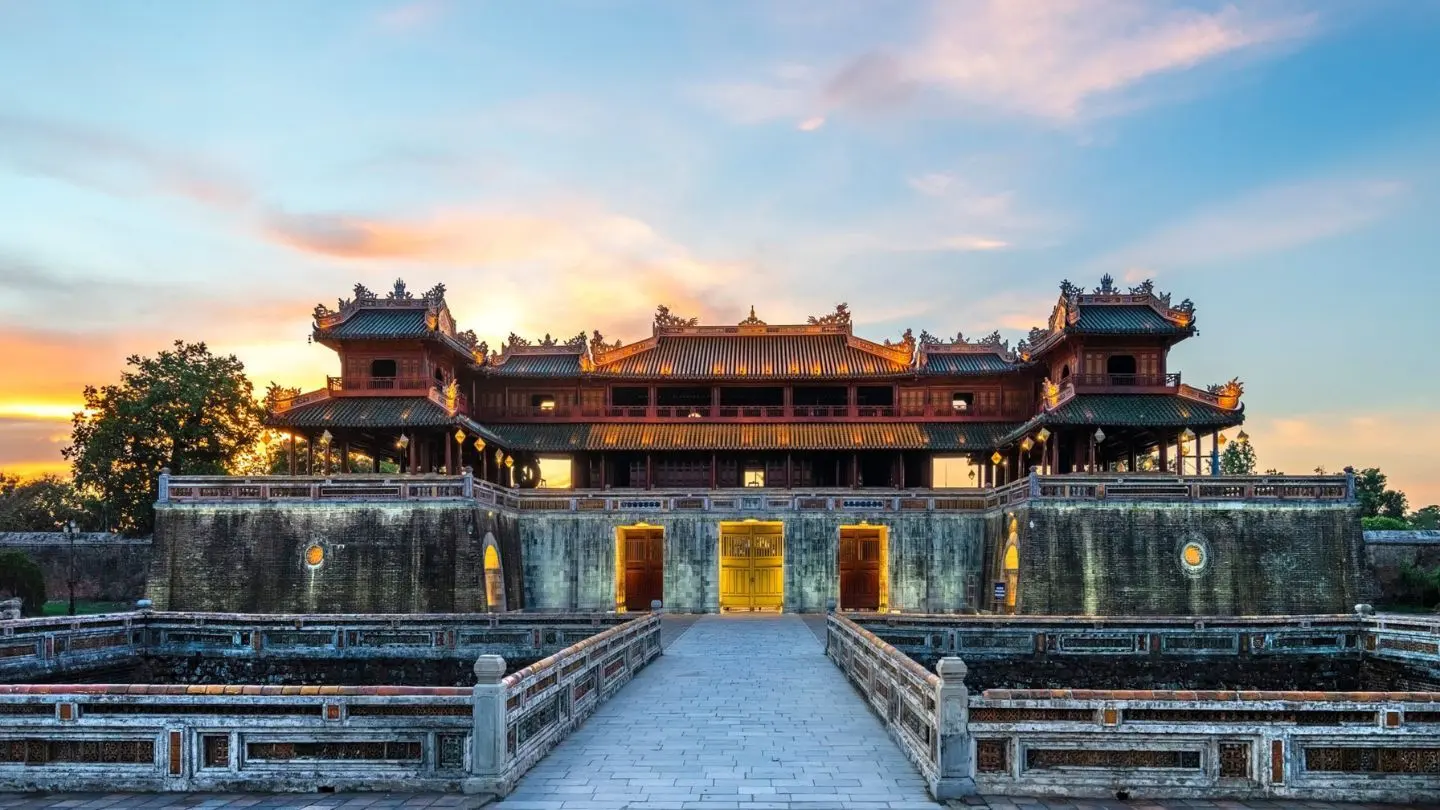
Built in 1362 and honored as a UNESCO World Heritage Site in 1993, the Imperial City of Hue is a breathtaking symbol of Vietnam’s royal past.
In 1993, the Hue imperial complex was recognized by UNESCO as a World Cultural Heritage Site. The city has become a mecca of Vietnamese tourism.
Source: Vietnamtourism.gov
From 1802 to 1945, Hue was the capital of Vietnam, chosen by the Nguyen dynasty not just for its location, but for its powerful spiritual energy – believed to be shaped by protective rivers and mountains.
Inspired by Beijing’s Forbidden City, this ancient citadel holds centuries of rich history, royal secrets, and timeless beauty waiting to be explored.
Opening Hours and Ticket Costs
Ticket costs:
- Adults: 200,000 VND
- Children (7 to 12 years): 40,000 VND
Opening hours:
- 8:00 am – 5:30 pm Friday to Wednesday
- Thursdays, the Imperial City of Hue opens at 8:00 am and closes at 10:00 pm
Must-See Highlights Inside Hue’s Imperial City
Step into a world once ruled by emperors – Hue’s Imperial City is full of stories, symbols of power, and stunning architecture. Even though time and war have taken their toll, what remains is absolutely worth exploring. Whether you’re wandering solo or following a guide, don’t miss these iconic stops inside the Citadel.
The Majestic Ngo Mon Gate – Where Emperors Once Stood
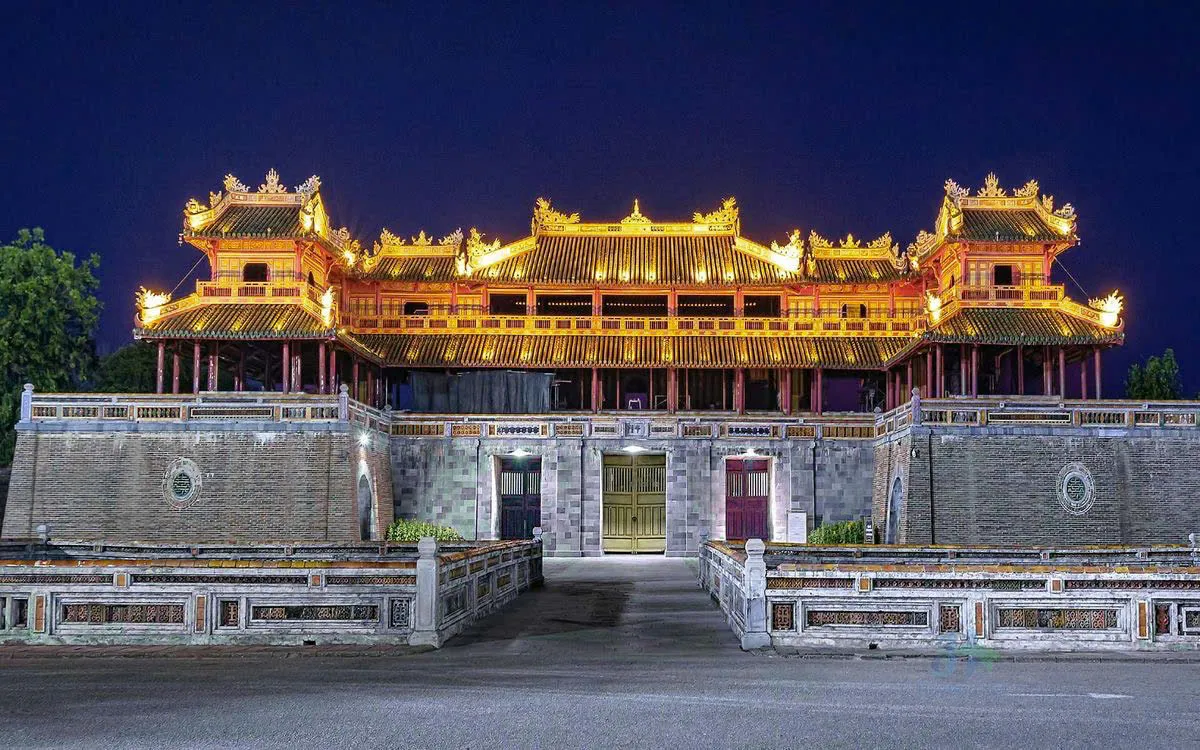
Known as Ngo Mon Gate, this was the grand entrance for royalty and official ceremonies. It’s not just a gate – it’s a statement. You’ll notice five pathways and the elegant “Five Phoenix Pavilion” above. This is also where Vietnam’s last emperor, Bao Dai, officially abdicated in 1945. You can climb up to the pavilion for a closer look and some royal views.
Thai Hoa Palace – The Throne Room of Legends

Step inside this regal hall and you’ll feel the grandeur of Vietnam’s imperial court. This was where emperors received envoys and held major ceremonies. The lacquered columns, golden details, and dragon motifs scream royal power. Don’t forget to look up—the ceiling is a masterpiece too!
The Forbidden Purple City – A Glimpse Into Royal Life
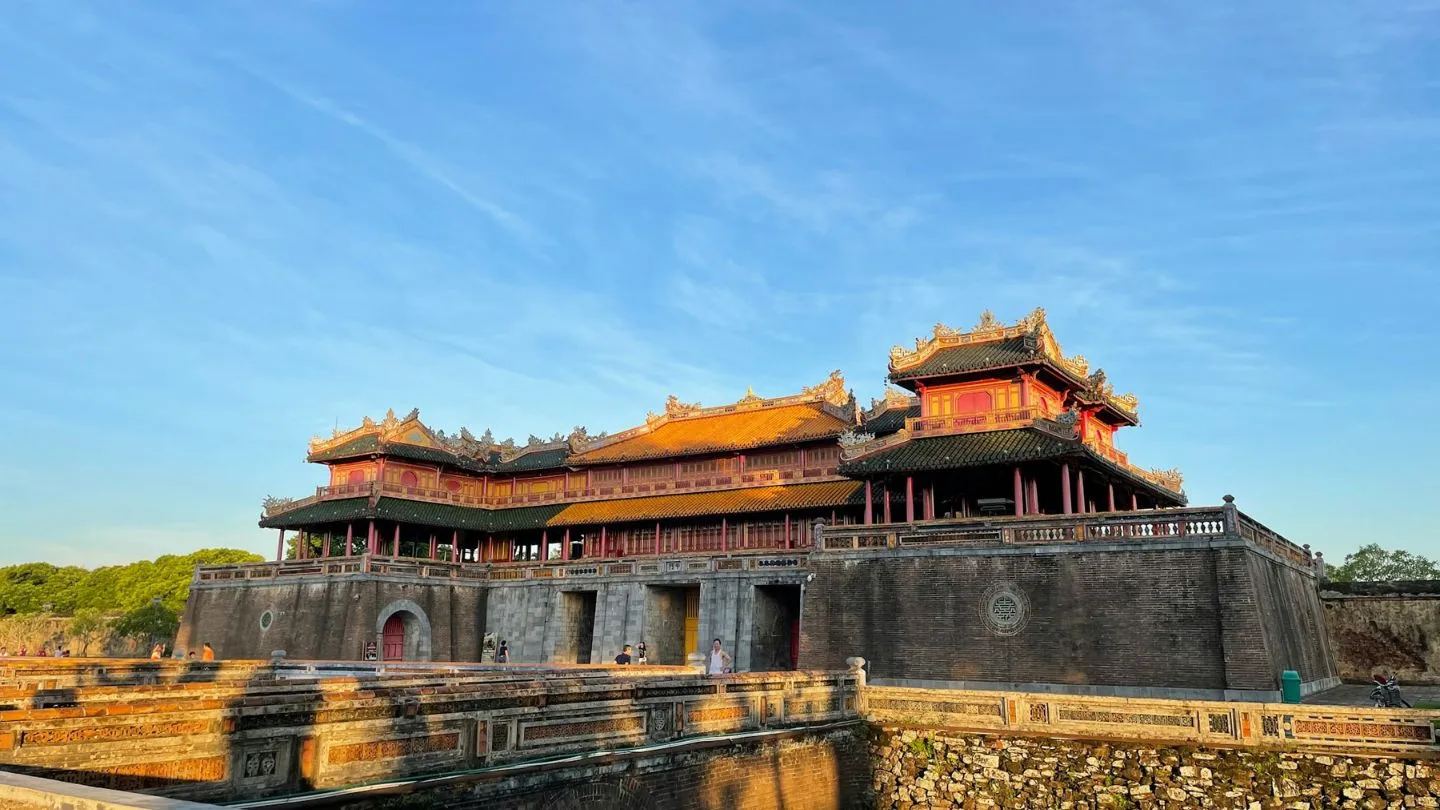
This secretive area was once strictly off-limits, reserved for the emperor and his closest circle. It’s the equivalent of the Forbidden City in Beijing but uniquely Vietnamese. Although many parts were destroyed, restoration is underway, and you can still wander through its peaceful courtyards and ruined beauty.
Duyet Thi Duong Royal Theatre – Where Culture Met Royalty
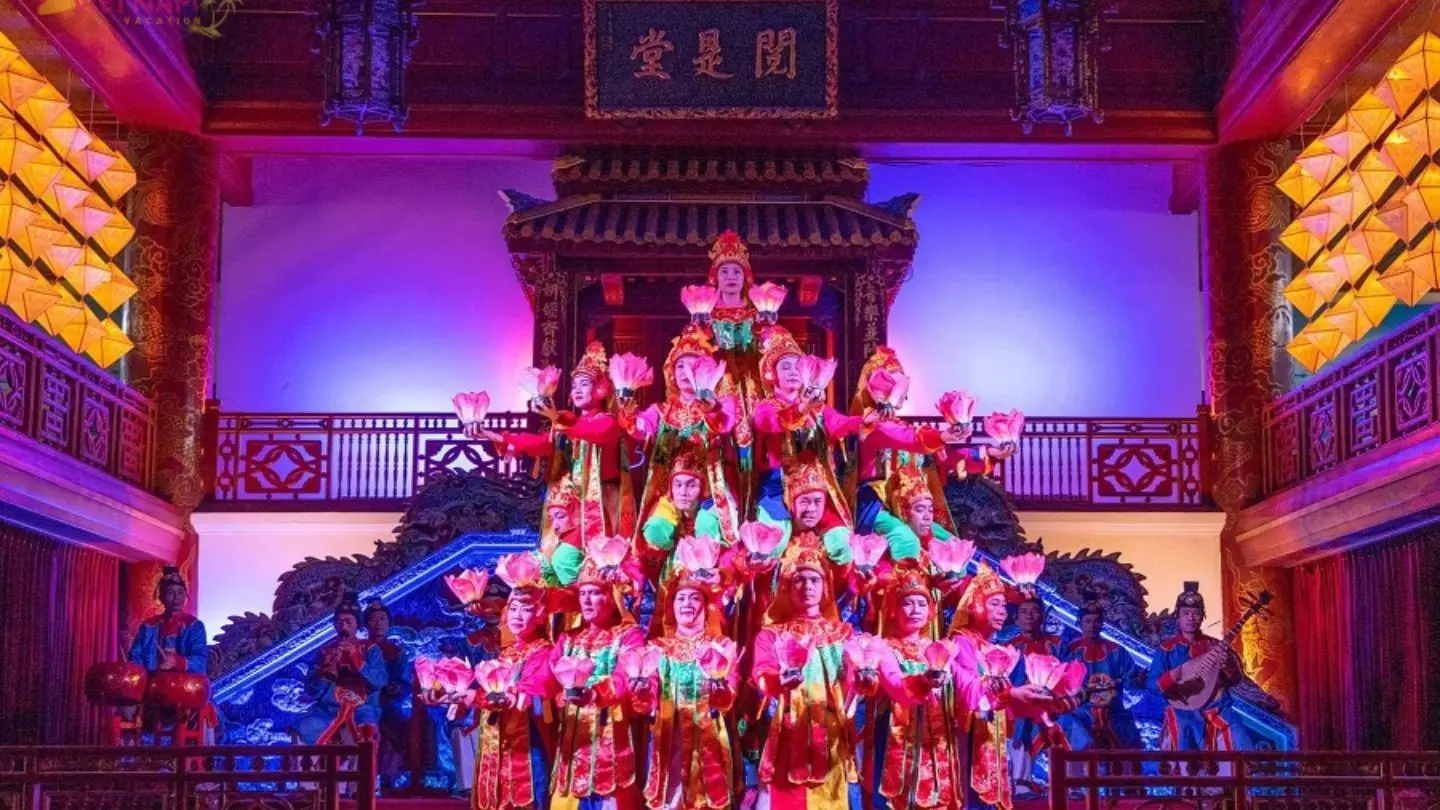
One of Vietnam’s oldest theatres, this charming venue once hosted performances just for the royal family. Today, you can still catch traditional music and dance shows here. It’s such a hidden gem – I wish I’d known about it earlier so I could’ve planned to watch a show!
Dien Tho Residence – A Palace Fit for Empresses
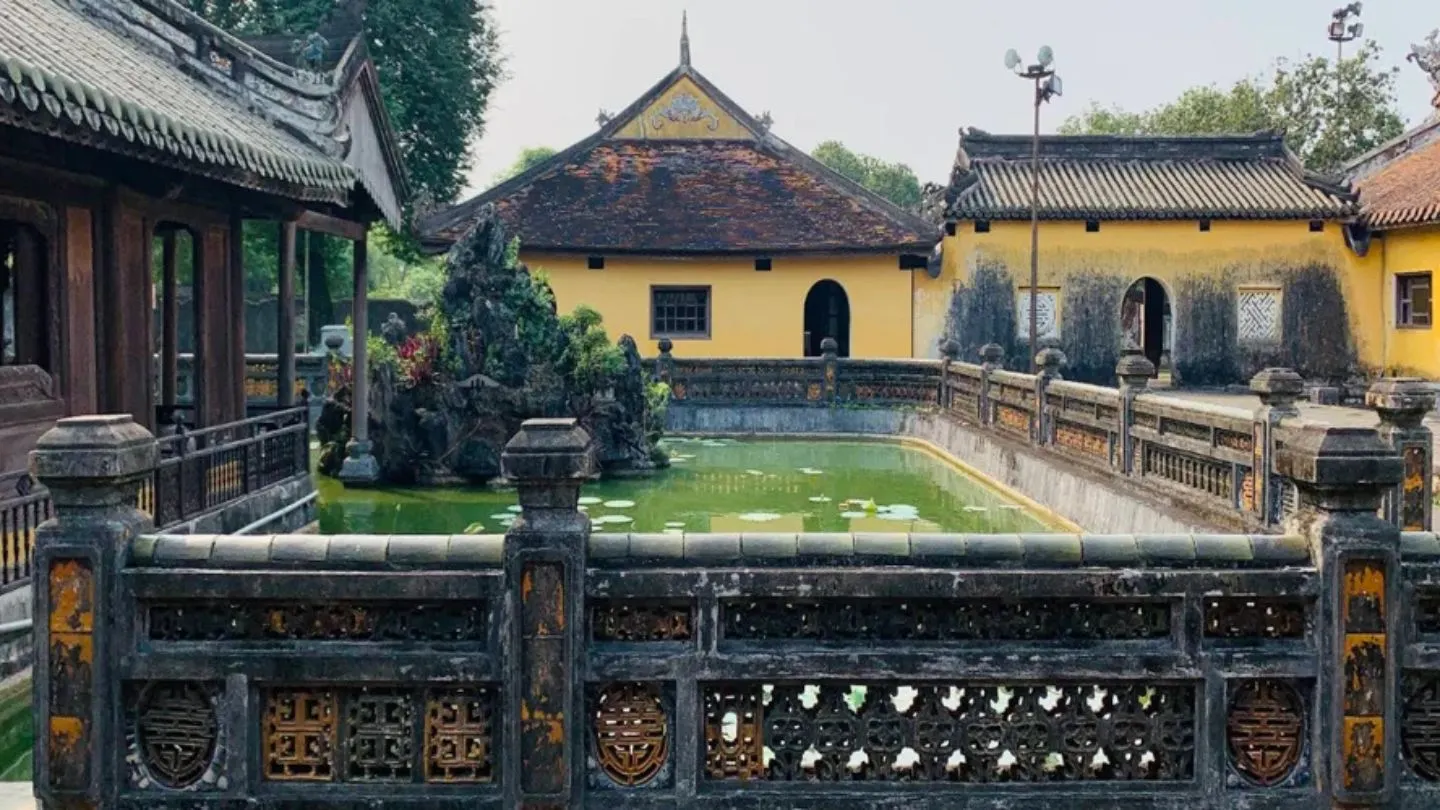
This elegant residence was the home of the empress dowager and remains one of the most intact buildings in the Imperial City. The architecture is graceful, with tranquil gardens and living quarters that hint at the luxury royal women once enjoyed.
Ancestral Temples & The Sacred Dynastic Urns – Power, Memory, and Art
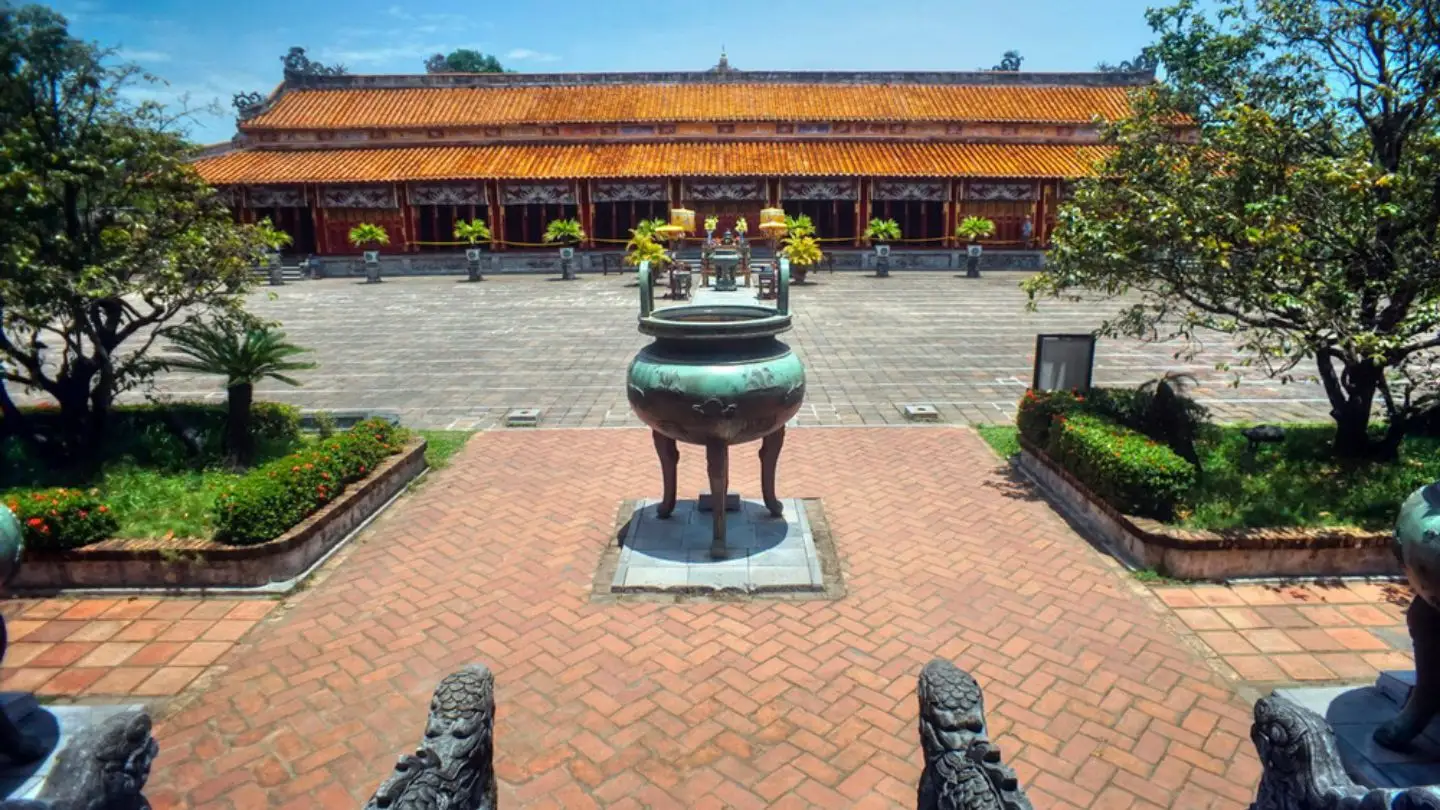
The Mieu and Hung Mieu temples are dedicated to the emperors of the Nguyen Dynasty and their ancestors. These solemn spaces are beautifully designed, with ancestral altars and statues glowing in soft natural light. Outside, you’ll find the Nine Dynastic Urns—each one carved with symbols of power, nature, and heritage. They’re massive, meaningful, and breathtaking.
Hien Lam Pavilion – The Tallest Tribute in the Citadel
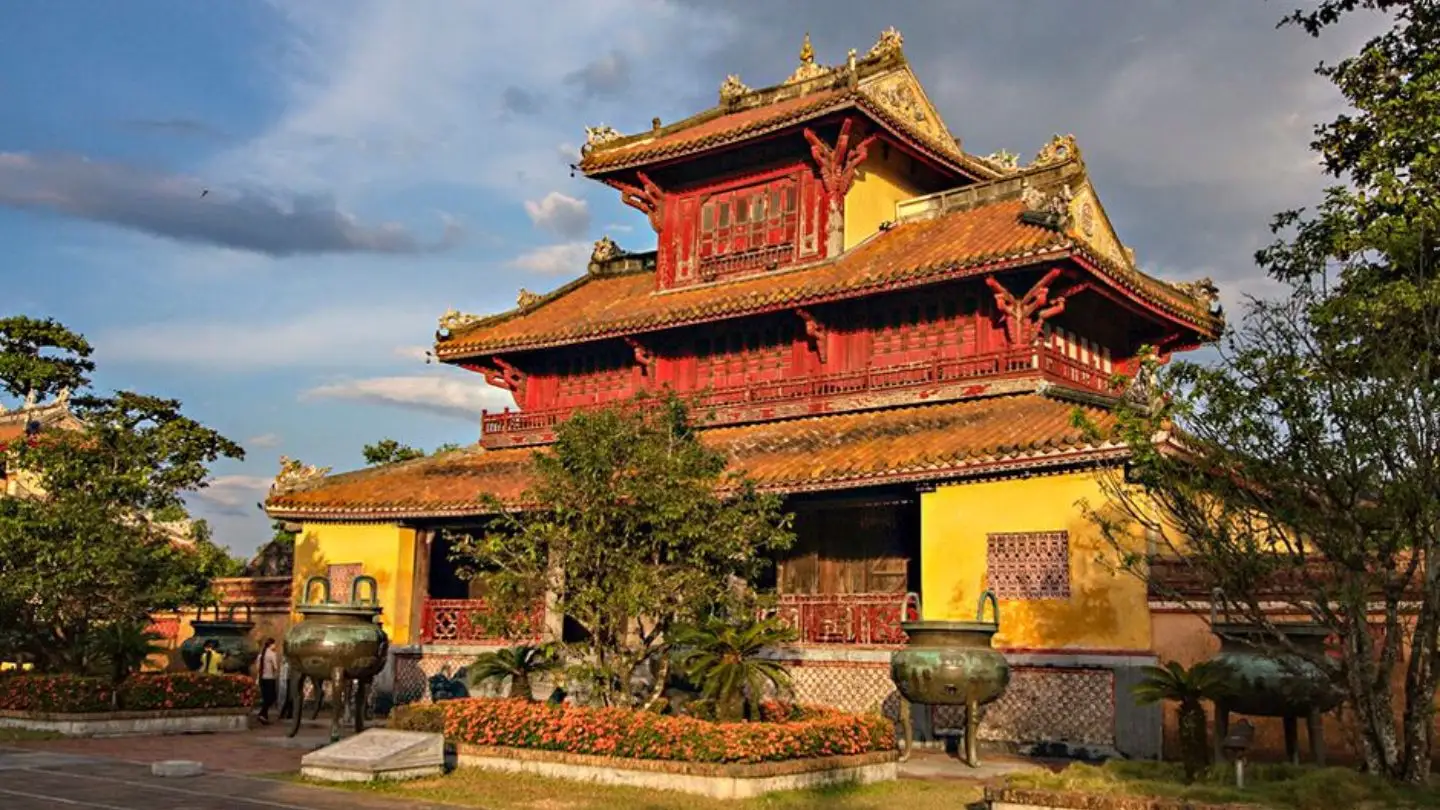
Towering over its surroundings, this three-story pavilion was built as a monument to honor the Nguyen emperors. It’s the tallest structure in the Citadel and gives you a great vantage point to appreciate the entire complex.
Curious about Hue’s hidden stories and stunning treasures? Hop on our Hue Tour from Da Nang! Explore the mysterious Imperial City, peaceful Thien Mu Pagoda, and the ornate Khai Dinh Tomb. Ready for an unforgettable journey? Let’s go discover together!
What Makes Hue Imperial City So Special?
So, what makes Hue Imperial City so special? Let’s dive in and explore its royal charm, rich history, and peaceful vibes that everyone falls in love with!
A Royal Relic That Stands the Test of Time
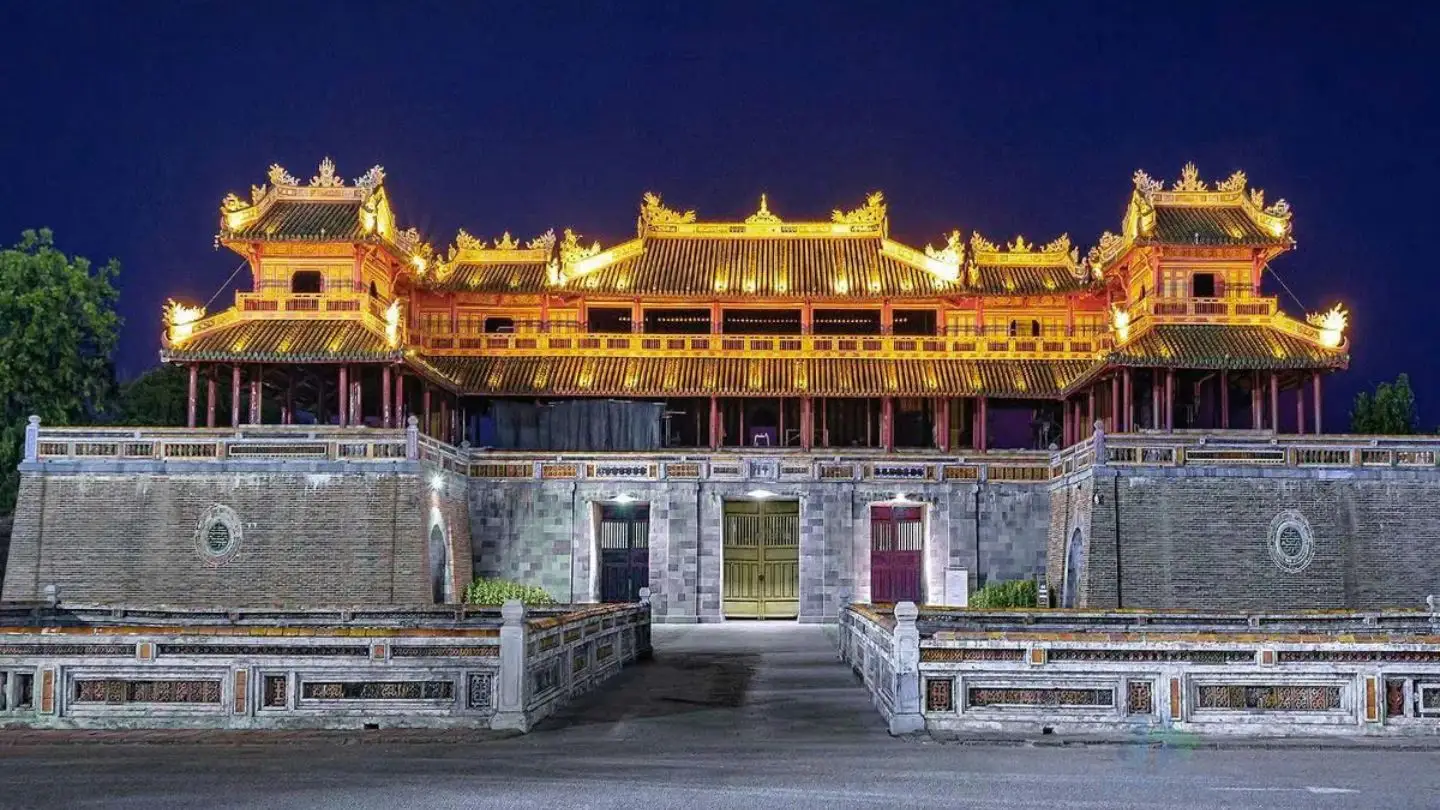
Even after more than 200 years, Hue Imperial City is still here – strong, beautiful, and full of stories. Despite wars and the passing of time, many of its palaces, walls, and temples remain almost untouched. If you’re curious about Vietnam’s royal past, this place is definitely worth a visit.
A Stage for Festivals and Royal Traditions
In the past, Hue was the heart of grand royal ceremonies. Today, many of these traditions are brought back to life during festivals. It’s amazing to see traditional costumes, music, and rituals being shared with the world again.
A Mix of Eastern and Western Military Design
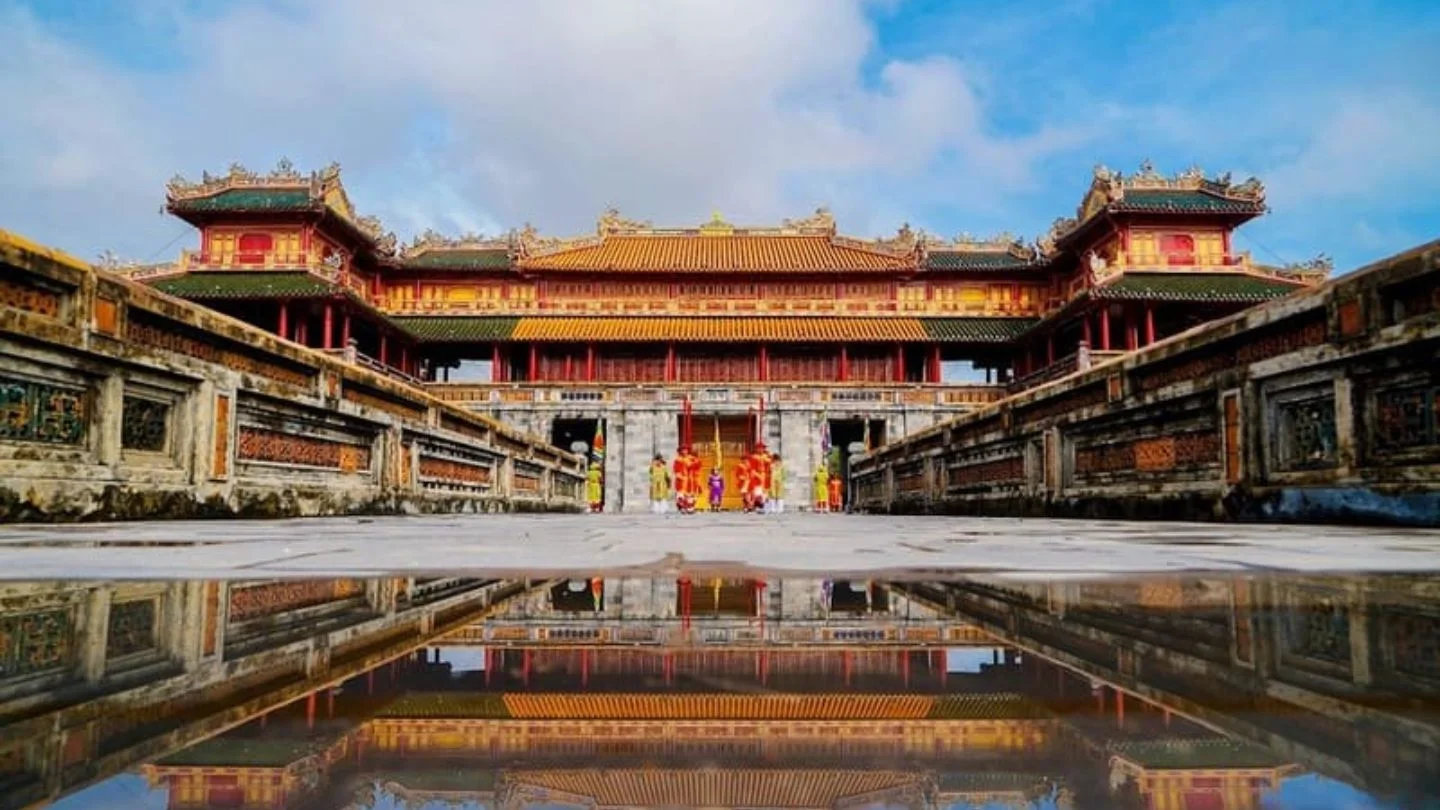
What’s cool about Hue Imperial City is that it wasn’t just made to look pretty – it was made to protect, too. Its structure combines French fortress style with Vietnamese principles like yin-yang and the Five Elements. It’s both smart and symbolic.
The Peaceful Tombs of Nguyen Emperors
The emperors of the Nguyen Dynasty chose some of the most peaceful, beautiful spots for their tombs. Think rivers, mountains, and calm ponds all around. Each tomb has two parts: one for worship and one for rest. Even during their lives, the emperors would come here to relax – and you’ll see why.
A Spot Chosen by Nature and Spirit
Why was Hue chosen as the capital? Ancient experts in geomancy believed the land–with its rivers and mountains–looked like powerful animals, like dragons and lions. That meant strong energy and good fortune for the royal family.
Inspired by Beijing’s Forbidden City
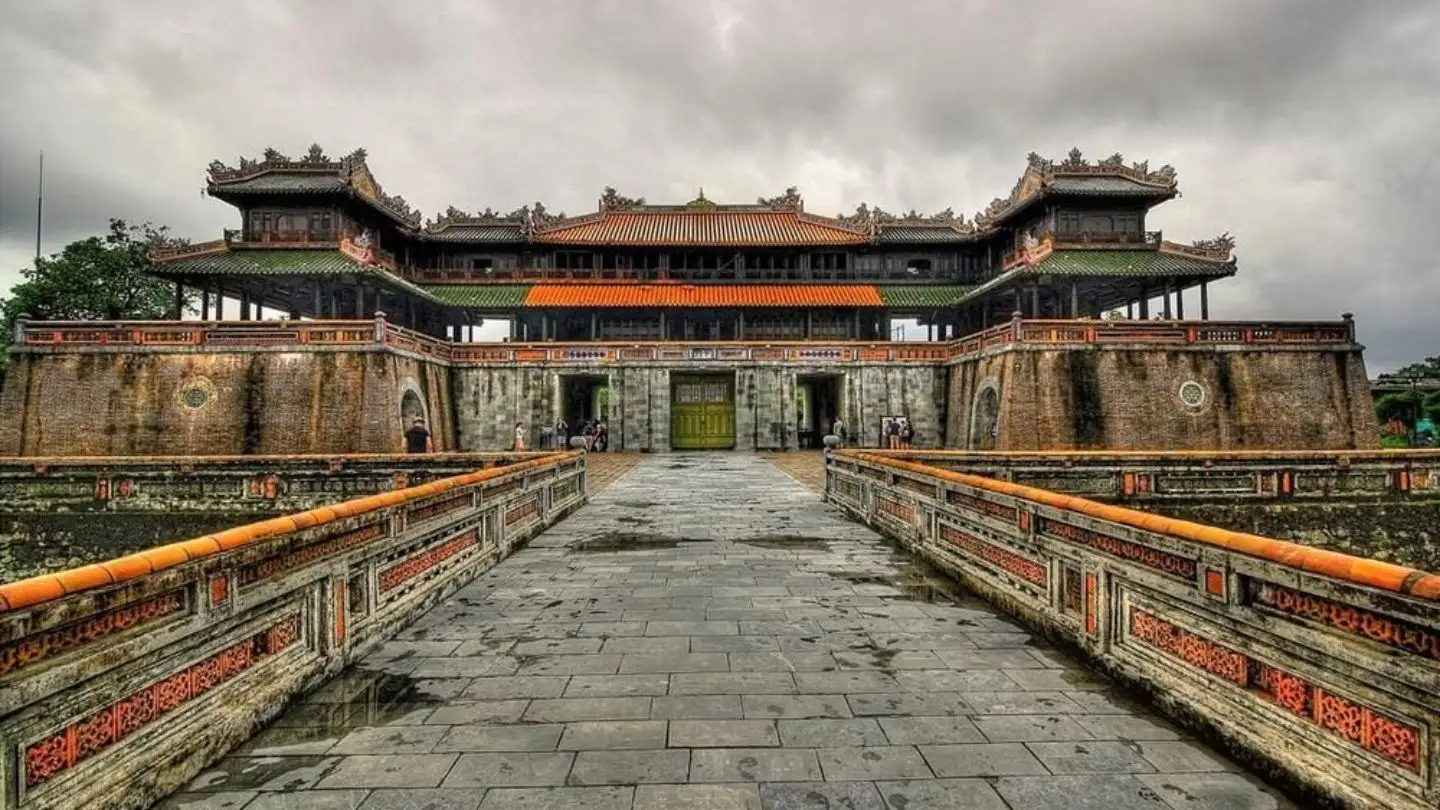
If you’ve seen photos of the Forbidden City in China, you’ll notice some similarities. Hue Imperial City was designed in a similar style, with square walls, a big moat, and a grand layout right at the center. It’s Vietnam’s own royal masterpiece.
A Treasure Trove of Royal Artifacts
Inside the city, you’ll find the Hue Royal Antiquities Museum – a quiet gem filled with ancient pottery, bronze items, and beautiful artworks. These treasures help tell the story of royal life in a very real, hands-on way.
The Unique Sound of Hue Royal Court Music
Did you know Hue is home to Vietnam’s only preserved royal court music? It’s so special, UNESCO recognized it as a world heritage. You can even enjoy live shows at the Duyet Thi Duong Royal Theater, right inside the Imperial City. It’s a magical experience you shouldn’t miss.
Architecture That Lives in Harmony With Nature
One of the most beautiful things about Hue is how its buildings flow with the land. Nothing feels out of place – from gardens and lakes to palaces and pathways. It’s calm, balanced, and truly peaceful.
Tips When Visiting Hue Imperial City

- 🕘 Go early in the morning to avoid the heat and big crowds.
- 👟 Wear comfy shoes – you will walk a lot!
- 🎟️ Buy a ticket at the gate or online before your visit.
- ☀️ Bring a hat, water, and sunscreen – it can get very hot.
- 📸 Take photos, but be respectful in quiet or sacred areas.
- 🏛️ Take your time to enjoy the buildings, gardens, and history.
- 📖 Read signs or use a guide to learn more about the places inside.
- 🧥 Dress politely, as it’s a historical and cultural site.
Conclusion
Hue Imperial City is not just a place — it’s a story waiting for you. Every corner has something special: old gates, peaceful lakes, and green gardens. You can feel the history as you walk. It’s calm, beautiful, and full of charm. Many people come and fall in love with this city. So if you want a trip that is fun, relaxing, and full of memories, Hue Imperial City is the perfect place. Don’t wait — come and see it for yourself!


